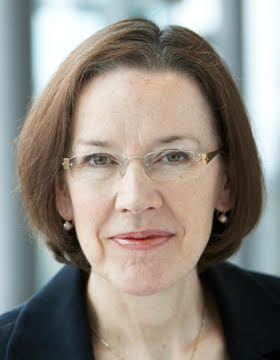Share:
Linda Holbeche, Contributor

In today’s competitive global marketplace, the business landscape is being rapidly transformed by the simultaneous convergence of epoch-defining issues, from disruptive technologies to pandemics to volatile geopolitical dynamics.
The challenges we are facing today are broader, more demanding, and disorienting than ever before. In the past, leaders were expected to have all the answers, but in today’s fast-changing context, that is not feasible anymore. The role of leaders is evolving rapidly in response to the changing circumstances.
The need for authentic leadership has never been more urgent or essential. Leaders are needed for all lines of business in an organization, especially since leadership and management go hand in hand.
We need leaders who embrace complexity and ambiguity, set direction and vision, make strategic decisions, and grapple with seemingly unsolvable business challenges. In such a fast-moving context, organizations must maximize each opportunity and pivot quickly to grow.
From generative AI and digital transformation to the virtual workplace, leaders must enable innovation and scale and exploit potential, which is not easy to achieve when leadership teams are distracted by other core business imperatives, according to McKinsey. Decisions need to be made fast when there are no easy answers or proven route maps to success.
Dave Ulrich et al. argue that individual leaders are needed who can set direction, allocate resources, instill confidence, and model appropriate behaviors. However, being a leader in these times is not only about providing strategic direction; it also requires motivating and engaging employees, building a strong organizational culture, and managing change and growth.
In a volatile context, we need leaders we can trust. This demands radically human leaders with empathy, compassion, humility, and understanding who genuinely care and can inspire and remotivate an often exhausted workforce. The best leaders build capability in others; they are able to empower and give voice to the collective wisdom organizations need to succeed.
Such leaders are not thick on the ground, and development programs can play a vital role in building the leadership capability required for today and tomorrow. Yet, it can be easy to deprioritize leadership development when times are tough.
Companies need leadership development programs to help leaders at all levels develop resilience and build human capability, the mainspring of business success. Well-targeted leadership development programs can help leaders respond to four types of challenges: strategic, change, political, and cultural.
In this article, I shall discuss how leadership development programs benefit the organization, its dynamics, its customers, and its employees.


Why Leadership Development Is Important
Leadership development is a critical component of organizational development since leaders are responsible for building organizational capability and disproportionately impact whether organizations succeed or fail. Leadership is coterminous with context change and the need for transformation.
Sometimes, context changes arise from external events, such as new developments in technology, climate change, and the market. Alternatively, they may result from deliberate choices, such as mergers, market expansions, or changes in work practices.
Regardless of the cause, these moments represent both opportunities and threats. During such times, gaining a profound understanding of strategy and organizational culture becomes essential.
Crises arising from out-of-control factors put leaders under time pressure to respond quickly with new solutions.
Real leadership is an inherently risky business since it requires leaders to avoid simply going for the low-hanging fruit of short-term advantage to address the more profound adaptive challenges that, if ignored, will later cause real problems.
Courage and the ability to take a wider view of what is happening, therefore, come into the mix. Development can help identify potential leaders who are capable of navigating challenges and crises in an unpredictable business situation.
Given the high stakes, being clear about the “why” of leadership development is crucial. This forms the basis of the business case for leadership development.
The London School of Business and Finance (LSBF) suggests that leadership development not only encourages people to improve their leadership skills but also helps create future leadership role models, retain top talent, and attract new faces when you build leadership capable of engaging and retaining the best employees.
The return on investment (ROI) from a leadership development program is very positive. According to the 2016 McQuaig Global Talent Recruitment Report, organizations that have invested in leadership development have seen a positive effect on the recruitment and retention of employees.
Leadership development can help potential leaders take on managerial roles and boost employee productivity, which can further translate into profitable business decisions and strategies.
However, leadership development is about more than building up your employees to improve your bottom-line finances. It can also have an optimistic influence on the climate of the organization and lead to improved morale and team spirit.
Leadership development programs can substantially improve corporate culture. It’s about investing in human capital and helping leaders help others thrive in a volatile context. Leadership exists at all levels, beyond those who have formal leadership roles.
Collective leadership matters because organizations require leadership behaviors from people at all levels who serve customers, care for employees, and make things happen. Personal leadership matters most of all as each individual adapts to new working conditions (e.g., working remotely, using technology), manages emotional demands, and seeks to achieve work-life balance.
First-Line Leaders

Many people with formal leadership roles feel under pressure to provide the “right” answers. Not surprisingly, when people take on first-line leadership roles, they might not be sure about the appropriate course of action.
First-line leaders are often given minimal training, which is rarely enough to help them transition to developing and leading a team that consistently and successfully delivers on strategy.
Moreover, the pressures and challenges for first-line leaders have dramatically increased post-COVID. They are being asked to do more with less money and with new team members—teams that are often working remotely, on short-term contracts, are not engaged, and are under record levels of stress.
Throughout the world, employees are grappling with issues such as the cost-of-living crisis and burnout, and their well-being (and mental health) has understandably suffered.
Firms are increasingly realising that first-line leaders play a vital role in the smooth functioning of operations and the well-being of the workforce. Leadership development helps create first-line leaders who can drive outcomes without driving their teams to burnout.
As technology changes the nature of work, people are hungry for ongoing skills development. First-line leaders are more likely to enhance their productivity and engagement by developing their teams. Research shows that 69% of employees will work even harder if they feel employers recognize and appreciate their efforts.
To have the strongest organizational impact in this new context, first-line leaders need to think ahead, make good decisions amidst complexity, and act quickly to get the right things done.
Research by Dave Ulrich and his team suggests that first-line leaders require a new skill set. They need to be curious, agile, open to learning, and willing to ask questions rather than supply “the answer.”
They need to be open to feedback, help their teams align their individual career goals with the organization’s goals, and model well-being.
Ulrich’s research suggests that first-line leaders can be supported through:
- Regular coaching on how to grow and guide their teams.
- Access to development to help them build their teams for the future and successfully navigate paradox.
- Clear messaging from both their leaders and the organization about priorities, directions, and how the organization sees the work of their team contributing to the goals and direction of the organization.
But What Should Senior Leaders Develop?
Stepping into senior, executive, and enterprise-level leadership roles, in particular, demands a step change. What do leaders need to be good at to deliver strategic and financial goals?
They need to be able to set direction, engage commitment, and adapt to complexity. They need to run the business while transforming it.
While there is no shortage of leadership skills and competencies defined as essential, the importance of self-awareness is common to all and cannot be overstated. The styles of leadership required in different situations may vary.
Leaders need to appreciate their own strengths and weaknesses and aim to provide the type of leadership needed in their context. Self-awareness plays a crucial role in enhancing a leader’s decision-making skills, improving team dynamics, and ultimately leading to more effective leadership. It is a life-long learning process.
In many ways, leadership is perhaps better viewed as a practice rather than as a set of personal characteristics. With respect to practice, many leaders face a similar set of tasks and four major challenges that they must deliver on: strategic, change, political, and culture. These require specific skills and competencies to be delivered well.


The Strategic Challenge
The strategic challenge is to clarify the path to sustainable success in a disrupted world and make smart decisions to stay ahead of the curve. This involves maintaining a forward-looking perspective, addressing immediate challenges without losing sight of the need to develop strategic capabilities and explore innovative pathways for the business.
Future strategy requires harnessing uncertainty, empowering others, using analytics, and so on. It means ensuring the organization can deliver and that the strategic and operational activities work hand in glove.
How can leaders create room for strategic thinking? How do they prevent panic when financial results fall short of expectations? According to Ulrich et al., “Leadership 3.0” involves forward-looking leaders who skillfully extract meaningful signals from an inundation of information.
Signals represent asymmetric information insights that carry both immediate and long-term consequences, shaping decision-making. According to Ulrich et al., crises serve as leadership opportunities, compelling leaders to swiftly devise innovative solutions under time pressure.
In crises, effective leaders learn from what has been done before but also anticipate and create what can be done going forward. As paradox navigators, leaders appreciate the dialectic process as much as the result.
Such leaders have realistic optimism about opportunities in today’s challenges and use uncertainty to reimagine or reinvent a positive future. These leaders conquer apprehensions by facing fears, envisioning a better future, regulating expectations, and experimenting nimbly.
The Change Challenge
Leaders must engage talent and guide teams through change. How do leaders mobilize people to tackle tough challenges and thrive? How do they lead change in a way that increases employee engagement and a genuine cross-organizational commitment to deliver successful transformation initiatives?
For Ulrich et al., hearing employees (not just listening) is all-important. Listening means that employees share information; hearing means that leaders receive that information with empathy.
Effective leaders are, therefore, inclusive and values-driven. Being an empathic leader requires recognizing personal biases and modeling how to overcome them. When employees feel “heard,” they are more likely to feel connected and better able to contribute to a positive workplace that leads to marketplace success.
Effective leaders create safe spaces where employees can honestly share their concerns about emerging work requirements, social injustice, and career opportunities. Employees feel heard, valued, and more connected to a community when this happens.
The Political Challenge
Many organizations are riddled with unhelpful politics that focus people’s attention internally rather than on what customers need and where the business needs to go.
In such contexts, leaders (and everyone else) can become risk-averse, and the loudest voice is the only one that counts. This leads to a toxic organizational culture, which is a common experience and the antithesis of growth and success.
Three-quarters (75%) of employees have experienced a toxic workplace culture, claiming that it has negatively impacted their well-being, attendance, collaboration, and retention. How can leaders build trust, legitimacy, and influence to get things done?
They must communicate authentically and make decisions based on the principles and values their organizations espouse. This links strongly with the culture challenge and requires ethics and courage to deliberately build a healthy workplace culture.
The Culture Challenge
Importantly, the culture challenge is the enabler or blocker of responses to the other challenges. Culture is a crucial aspect of a high-performance talent management strategy, as it can impact every area of an employee’s working life—from satisfaction and well-being to productivity, career development, and, ultimately, contribution to future business success.
How do leaders embed a culture that helps people adapt and thrive? This is about leaders deliberately building cultural DNA and using themselves as role models for the evolving organization.
Ulrich et al. argue that by focusing on the right culture and combining purpose, values, brand, and culture into an integrated organizational agenda, leaders can help their organizations succeed in the marketplace and employees prosper in the workplace.
With So Many Challenges, How Do You Design Powerful, Purposeful Leadership Experiences That Shift the Dial?

According to Harvard Business Review traditional executive education is simply too episodic, exclusive, and expensive to build the leadership capability required for today.
It cannot easily bridge the gap between the skills that executive development programs build and those that firms require—particularly the interpersonal skills essential to thriving in today’s flat, networked, increasingly collaborative organizations. Often, leadership development is viewed as unfocused, predictable, and ineffective.
While there is a growing mix of online courses, social and interactive platforms, and learning tools available from both traditional institutions and newcomers, many providers are far less experienced in teaching people how to communicate and work with one another effectively. Moreover, if executives cannot apply what they learn in their real-world context, the learning gap will remain.
To be effective, leadership development should be highly aligned with business strategy, and leaders’ skills should be developed to deliver this. It should meet both individual and collective learning needs and develop a ‘test and learn’ mindset. Experiential learning is a key enabler of this.
Programs should be relational, flexible, and adaptable to each group. That said, an understanding of theory is important, as it widens the possibility of taking experience and ideas to a wider stage of the organization and elsewhere and understanding the reasons why we see the world as we do, with its shortcomings and strengths.
To encourage leaders to look outside and ahead, they should be exposed to leaders from other industries to get them thinking about how their experiences and insights might apply to participants’ organizations in the future.
Customers should be at the heart of discussions about the future. An immersive learning experience is highly effective at this. Walking the shop floors of other companies can be inspirational.
The Right Leadership Development Strategy Has a Significant Role To Play in Creating an Effective Workplace Culture
Businesses that want to embrace cultural transformation must also embrace technology, specifically artificial intelligence, to create space to evolve at pace. Yet, few organizations are taking advantage of AI, with just 38% of companies currently using it to its fullest potential in their talent and leadership programs.
Experts argue that it’s relatively easy to innovate with artificial intelligence but much harder to scale: an estimated 40% of digital and AI transformations stall at the scaling phase, often because of tech anxiety and a lack of understanding of how to optimize the potential for humans and machines to work together.
Leadership development can update leaders’ digital skills and help them “understand the specific capabilities it takes to scale and build them into the road map.” A balanced approach to implementation can reduce tech anxiety, and workplace culture can be positively transformed.
Building a more inclusive and human culture should also be a key focus of the intended learning. Building trust is vital, so there must be continuous dialogue with employees.
Alongside collective learning, personalized development experiences should flex and adapt to individual leaders’ needs, especially during the critical moments that truly impact leadership.
For instance, one leader in a group who was experiencing major difficulties managing change in his business unit was better able to explore possible ways forward in depth with fellow participants during and after a program—and he learned to manage change better.
If you develop leaders at every level, you get change at every level, too. Assessment, development, and coaching should be tied together to create personalized journeys at scale, creating a valuable learning experience for employees and their managers.
Embedding and Sharing Learning

Following programs, development experiences should be shared, sustained, and accelerated so leaders can grow and succeed in an uncertain future. As a leader, development can help you identify and use your strengths and weaknesses to your benefit.
It is crucial to continue to build your skills and visibly put them into practice, learning and improving as you go. Learning groups and cross-organizational dialogues can help executives clarify priorities, inspire others, build a climate of innovation, drive strategic growth, and build corporate cultures of success.
Applying learning to your own team is vital. For instance, as a leader, you need a clear vision of the goals pertaining to the organization and the team. So, develop detailed strategies and share them with your employees.
Take feedback from your team, and include team members in your strategic planning sessions. This shows that you value their opinion and will encourage active participation and out-of-the-box thinking that might significantly contribute to strategic planning.
Moreover, you can teach these skills to your team members and encourage them to play to their strengths. This is particularly important, as the World Economic Forum estimates that 44% of workers’ skills will be disrupted by 2028. Recent research revealed that 41% of employees don’t believe their organization provides the resources needed for skills development.
How do leaders personalize employee learning and also build collective capability, agility, and resilience? Leaders can encourage and empower employees to develop and maintain a strong skillset that equips them to succeed well beyond their current role.
Leaders must feed their employees’ desire to learn and grow by ensuring the right skills development content, offering more tailored, comprehensive career guidance, and providing more coaching and mentoring opportunities.
By bolstering workforce skills and confidence in this way, leaders can begin to develop a positive, healthy, and supportive work environment in which everyone enjoys meaningful work and is continuously developing skills.
A holistic leadership and talent development strategy should also focus on promoting collaborative working, with inclusion, well-being, and growth at its heart.
For instance, businesses can provide high-quality learning content that tackles daily well-being challenges, such as how to deal with the potential sense of isolation in remote working, how to deal with conflict, how to give and receive constructive criticism, and how to support colleagues who may be struggling with stress levels at work.
A high-performance workplace environment is dynamic and focused on growth. Ultimately, businesses that develop their leaders to prioritize transforming their culture and building capability for the future will revitalize their workforce and experience holistic success as a result.

Dr Linda Holbeche is an independent coach, developer, consultant, researcher and author in the fields of HR, strategy, organization design and development and leadership. She works with UK and international clients in many sectors. A recognized thought and practice leader and voted one of the UK’s HR Most Influential, Linda was previously CIPD’s Director of Research and Policy.


